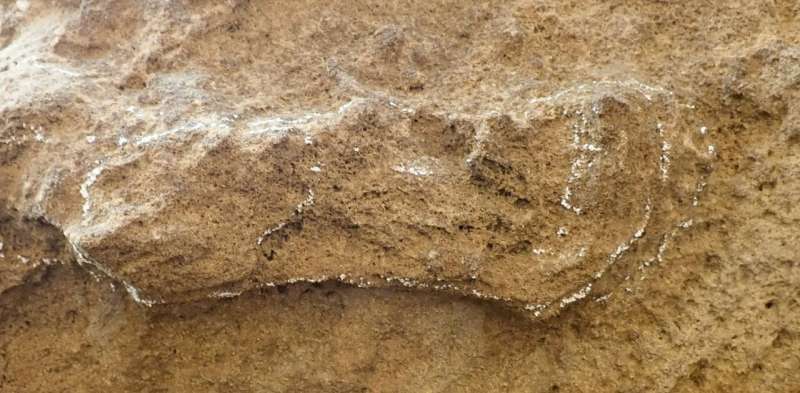This article has been reviewed according to Science X's editorial process and policies. Editors have highlighted the following attributes while ensuring the content's credibility:
fact-checked
trusted source
written by researcher(s)
proofread
Fossil footprint discoveries and what they tell us

Footprints on a sandy surface don't usually last long: they're washed away by water, wiped out by wind or covered over by new tracks. At certain sites in southern Africa, though, some traces of animals have lasted for many thousands or even millions of years—fleeting moments preserved in sand that turned to rock.
They tell scientists about the creatures that lived in ancient times, how they behaved and what their environment was like. Studying fossil footprints also adds to what the body fossil record reveals.
In these articles from our archive, scientists share some of their exciting fossil footprint finds.
Zebra crossing, with a difference
Charles Helm studies the fossilised tracks, trails, burrows and excavations made by animals. He's discovered how, tens of thousands of years ago, a huge horse species roamed along South Africa's Cape south coast.
These findings also revealed that these Giant Cape Zebras must have been a fairly regular sight on the landscape. An insight that body fossil records don't provide.
Oldest human footprints
Armed with specialist skills and world-class technology, Charles Helm also teamed up with geographer Andrew Carr to investigate tracks along South Africa's coast. That's how they identified something truly remarkable: a footprint left by one of our human ancestors 153,000 years ago. So far, it's the oldest footprint in the world attributed to our species, Homo sapiens .
They explained how the finding also confirms that the Cape south coast was an area in which early modern humans survived, evolved and thrived, before spreading out of Africa to other continents.
Dinosaur behavior insights
Today, dinosaur fossils can be found in many parts of the world. South Africa and Lesotho's main Karoo Basin, for example, contains many dinosaur fossils and dinosaur markings, like footprints.
Miengah Abrahams explains that fossil footprints are a treasure chest of information. They can reveal what organism made the tracks, offer clues to their behavior and even provide evidence about the conditions in which they lived. She outlines what's been learnt from dinosaur tracks in the Karoo Basin.
An unexpected discovery
In this article, Miengah Abrahams tells the story of how she unexpectedly came across some new dinosaur footprints in Lesotho. For a geologist studying dinosaur tracksites this wasn't a massive surprise, but it was the first time a dinosaur from the ornithischian group—a four-footed, plant-eating, "bird-hipped" community—had been documented in the Roma Valley, an area rich in fossil footprints.
Provided by The Conversation
This article is republished from The Conversation under a Creative Commons license. Read the original article.![]()





















